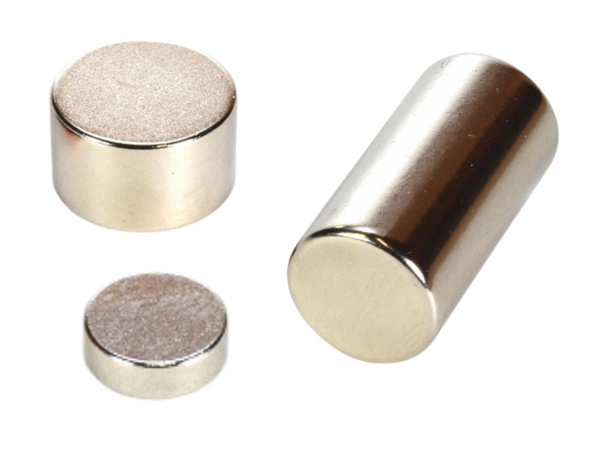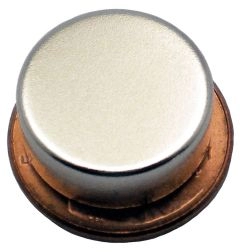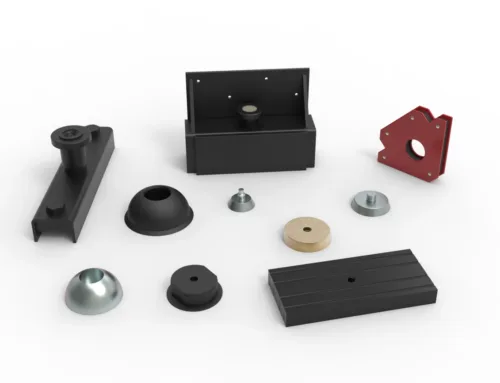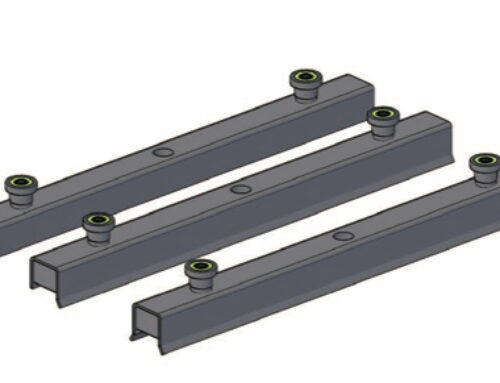Ever wondered what a disc magnet really is and why it’s everywhere—from your fridge door to high-tech gadgets? These small, flat, circular magnets pack a surprisingly powerful punch, making them a go-to in countless industries and DIY projects alike. Whether you’re curious about their unique shape, how they work, or why neodymium disc magnets reign supreme, this guide breaks it all down—quick, clear, and practical. Ready to unlock the secrets behind disc magnets and discover how they can elevate your next project? Let’s get started!
Understanding the Basics
What is a Disc Magnet
Have you ever wondered what exactly makes a disc magnet unique? Simply put, a disc magnet is a type of permanent magnet shaped like a flat cylinder or a thin, round plate. Think of it as a tiny metal pancake that creates a magnetic field. This shape is what sets it apart from other magnet types like blocks, rings, or spheres.
Anatomy of Disc Magnets
Disc magnets have two flat faces—the top and bottom—where the magnetic poles are concentrated. These faces are usually where the strongest magnetic pull force is found. The edge of the disc is much thinner compared to its diameter, giving it a broad surface area that maximizes magnetic strength in a compact form.
How Disc Magnets Differ from Other Shapes
What makes disc magnets stand out? Unlike block magnets, which have a more uniform magnetic field, disc magnets focus their magnetic force across their flat faces. This difference is crucial when you need a magnet that fits into tight spaces or needs to hold objects flat against a surface.
Disc magnets are especially popular because their shape combines strength and versatility. Whether you need a small magnet for an electronic device or a powerful neodymium disc magnet for industrial holding, the disc shape offers an ideal balance you don’t get with other permanent magnet shapes.
In short, if you need a magnetic solution that’s strong, space-efficient, and easy to position, disc magnets are often the first choice.
Types of Disc Magnets Materials Grades and Magnetization Explained

Disc magnets come in different materials, grades, and magnetization styles. Choosing the right type depends on what you need for strength, durability, and performance.
Common Materials and Their Properties
- Neodymium Disc Magnets: The most popular type, also called rare earth magnets. They are super strong for their size and great for industrial holding magnets or DIY projects needing powerful pull force.
- Ceramic or Ferrite Magnets: More affordable but weaker than neodymium. They resist corrosion well and work fine for simple household uses.
- Alnico Magnets: Made from aluminum, nickel, and cobalt. They keep their magnetic strength at high temperatures but are more brittle.
- Samarium Cobalt: Another rare earth option. Strong, heat resistant, and corrosion resistant, but pricier than neodymium.
Magnetization Directions Axial vs Diametric
Disc magnets are usually magnetized in one of two ways:
- Axial Magnetization: Magnetic poles are on the flat circular faces. This is the most common and means the magnet’s pull force acts straight out from the face.
- Diametric Magnetization: Poles are on the curved edge of the disc. This lets the magnet create a sideways magnetic field, which works for special applications.
Grades and Coatings for Durability
- Grades: Neodymium magnets are labeled by grades like N35, N52, etc. Higher numbers mean stronger magnets. For example, N52 is one of the strongest you’ll find.
- Coatings: To protect discs from rust or damage, manufacturers add coatings such as nickel-copper-nickel, epoxy, or zinc. Especially important for magnets used outdoors or in moist conditions.
When picking a disc magnet, consider the material strength, magnetization style, and protective coating to get the best fit for your project.
Key Benefits Why Choose Disc Magnets for Your Projects
Disc magnets offer some standout advantages that make them a top choice for a wide range of uses. Here’s why they’re worth considering:
Superior Strength-to-Size Ratio
One of the biggest perks of disc magnets, especially neodymium disc magnets, is their impressive magnetic pull force despite their compact size. This means you get powerful holding strength in a small, easy-to-fit shape. For projects where space is tight but strength matters, disc magnets deliver without bulk.
Versatility and Cost-Effectiveness
Disc magnets are incredibly versatile. You’ll find them in everything from industrial holding magnets to DIY crafts. Their simple shape makes them easy to incorporate into different designs, whether you need axial magnetization or something customized. Plus, because they’re widely produced and made from common rare earth materials, disc magnets offer great performance without a high price tag.
Choosing disc magnets gives you a durable, reliable option that balances size, power, and value perfectly for both professional and home projects. If you want to learn more about different magnet shapes and uses, check out our guide on what is a cylinder magnet.
Real-World Applications Where You’ll Find Disc Magnets in Action

Disc magnets show up in lots of places around us. Their strong magnetic pull force and compact shape make them a favorite in many settings, from simple household uses to complex industrial tasks.
Household and DIY Uses
- Fridge magnets and organizers: Neodymium disc magnets stick well and hold papers, notes, and tools.
- Crafts and DIY projects: They’re perfect for creating custom closures, magnetic compartments, and even homemade gadgets.
- Electronics and small appliances: You’ll find them used inside speakers, sensors, and motors for reliable performance.
Industrial and Commercial Applications
- Industrial holding magnets: Disc magnets hold metal parts firmly during manufacturing or assembly, saving time and boosting efficiency.
- Automotive and machinery: Neodymium disc magnets are common in motors, generators, and sensors due to their high-grade neodymium strength.
- Magnetic separators and filters: They help remove metal debris from materials, keeping equipment safe and efficient.
Educational and Innovative Uses
- Science kits and experiments: Disc magnets help demonstrate magnetic fields and forces in classrooms.
- Prototyping and innovation: Inventors and engineers often rely on these magnets for creating prototypes and testing new designs, thanks to their consistent magnetic pull force.
- Magnetic therapy devices: Some wellness products use disc magnets, though it’s always good to check science-based claims before use.
Whether you’re fixing something at home or working on a big industrial project, disc magnets offer flexibility and strength that make a difference.
How to Select and Use Disc Magnets Safely
Choosing the right disc magnets start with understanding your project’s needs. Here are key factors to consider:
- Magnet size and strength: Match the magnetic pull force to your application. Larger or stronger magnets like high-grade neodymium disc magnets work best for heavy-duty tasks, while smaller ones suit crafts or light fixing.
- Material and grade: Pick the right material for durability and performance. Neodymium magnets offer powerful strength, while ferrite ones are more budget-friendly but less strong.
- Magnetization direction: Decide between axial magnetization (magnetized through the thickness) or diametric, depending on how you’ll position the magnet.
- Coatings: Opt for custom magnet coatings like nickel or epoxy to prevent rust and wear, especially in humid or industrial environments.
When handling disc magnets, follow these safety tips:
- Keep magnets away from electronics: Strong magnets can damage devices like phones or credit cards.
- Avoid pinching injuries: Disc magnets snap together quickly and can pinch skin. Handle with care.
- Store safely: Keep magnets out of reach of children and pets to prevent accidental swallowing.
- Use appropriate tools: When installing industrial holding magnets, use gloves and tools designed for magnet handling to avoid accidents.
Learning more about magnetization can help you pick the perfect disc magnet. For example, check out what axial magnetization means to better understand magnet orientation.
By keeping these factors and safety tips in mind, you’ll select the right disc magnet and use it effectively and securely for your project.
NBAEM Your Trusted Partner for Premium Disc Magnets
When it comes to high-quality disc magnets, NBAEM stands out as a reliable supplier in the United States market. We specialize in providing top-grade neodymium disc magnets with superior magnetic pull force and consistent performance, perfect for everything from industrial holding magnets to everyday DIY projects.
Why choose NBAEM?
- Wide selection of neodymium disc magnets in various sizes, grades, and magnetization styles including axial magnetization
- Custom coatings to ensure durability and resistance against corrosion in different environments
- Bulk supply options suited for manufacturers, engineers, and hobbyists alike
- Expert support to help you select the right magnet for your specific application, whether it’s for household uses or more demanding industrial setups
Our commitment to quality and customer satisfaction makes NBAEM your go-to source for rare earth magnets tailored to the unique needs of worldwide customers.
With NBAEM, you get reliable performance and lasting value in every disc magnet.





[…] Measure the space where the magnet will fit. Appliances often require specific magnet shapes like discs, blocks, or rings — sometimes even custom designs. Making sure the size and shape fit can save you installation headaches and ensure better performance. If you want to learn about common magnet shapes, check out this overview of disc magnets. […]